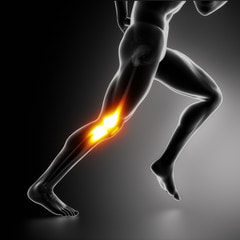|
By Dr. Jessica Warnecke, PT, DPT, OCS  Iliotibial band (ITB) syndrome is a stubborn repetitive strain injury. This pain can be a very common complaint among the active population and one that doesn’t necessarily always go away on its own. Many try to foam roll their IT band as a quick fix to alleviate pain, but in all actuality, this does nothing more than make you miserable throughout the duration of your rolling session. This IT band is actually fascia, a connective tissue around our muscles made to help support and stabilize our movement and keep out infections. The collagen of this fascia tissue helps to resist tensile strength of our ligaments, tendons, and muscles- meaning prevent any breaking under tension or pressure (foam rolling). Stretching or manual techniques geared at releasing this fascia do not present nearly enough force to actually change the tissue, no matter how hard you push or what tool you use... Foam rolling your IT band WON’T HELP ANYTHING!!! Common symptoms of this syndrome include "snapping" over the knee as you bend/straighten your leg, swelling on the outside of the knee, pain after activity, and sometimes pain/tightness at the outside of the hip. The pain is a result of friction occurring where the IT band meets the knee and is often due to a combination of weakness and tightness throughout the core, hip, thigh, and knee areas. If you're struggling with IT band like symptoms or are feeling limited with activities because of knee pain, getting an evaluation by an orthopedic physical therapist will allow them to fully access your entire body, see how you move, and determine the area(s) feeding into your complaints. The true sources of your IT band discomfort must be addressed in order to reduce pain, improve function, and prevent recurrence of symptoms in the future. Treatment generally consists of strengthening the core and glute muscles, improving the mobility of your glutes, quads, hamstrings, and tensor fascia latae (TFL) muscles, and correcting any biomechanical deficits during your dynamic movements (running, squatting, jumping, etc). If addressed appropriately, this common complaint can quickly go away! Below are some suggested exercises to try for both mobility and strengthening of your lower body if you are struggling with IT band like symptoms. Keep in mind, without a full examination, I cannot know for sure what YOUR body needs, so if you have questions-- ask!
If you have tried these without success, or battle chronic knee issues, what is keeping you from seeing a PT? Don't push it off and hope that the pain or limitations will go away one day. Let a professional examine you and get you back on track with a specific, individualized plan that will be effective! Once you get started, it can be a simple issue to resolve!
4 Comments
1/19/2022 01:57:35 am
Thanks for pointing out that a physical therapist can fully access our entire body. My husband got a left leg injury while doing his job at the construction site last week. Since the doctor has advised that he needs to recover for at least six months, we will be looking for a clinic on Monday that can provide physical therapy for him every week at an affordable rate.
Reply
4/27/2022 08:57:17 pm
I like your PT tips. I need to fix my knee. I'll have to talk to a therapist about some exercises.
Reply
9/20/2022 01:50:41 am
Such an beneficial article, keep up the good work. Thank you so much for sharing.
Reply
Your comment will be posted after it is approved.
Leave a Reply. |
Meet Your TherapistJessica has been in Austin, TX for the past four years. She grew up in Idaho and attended PT school at Idaho State University. She completed an Orthopaedic Residency and became a Board Certified Orthopaedic Clinical Specialist in 2016. Archives
February 2022
Categories
All
|

 RSS Feed
RSS Feed